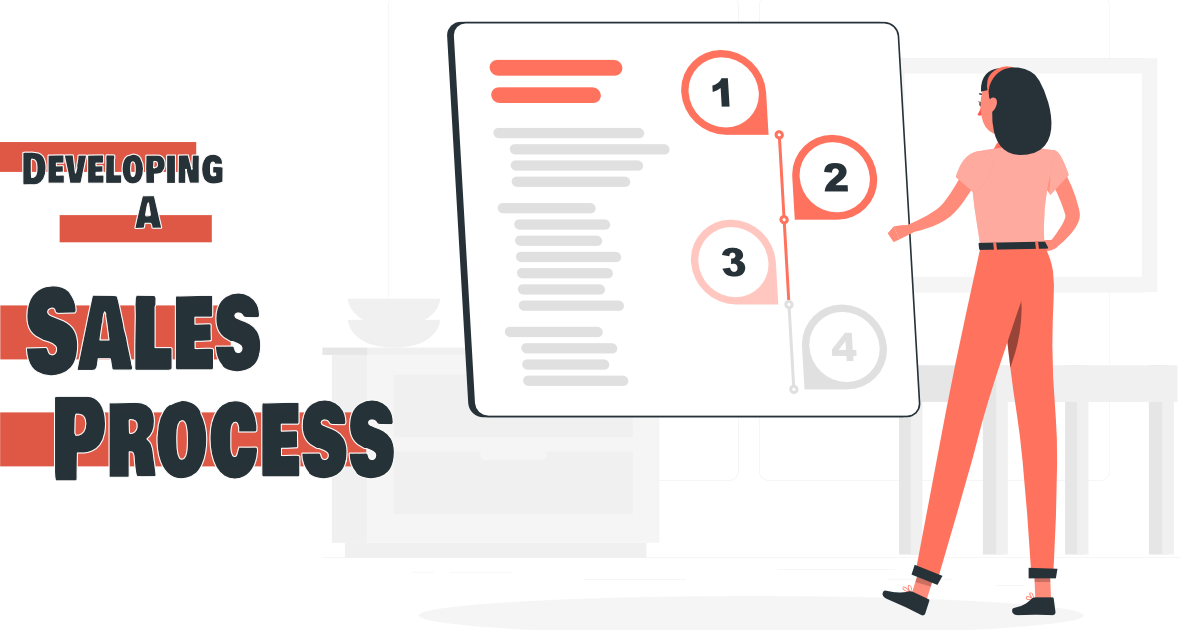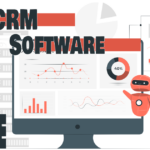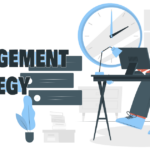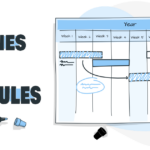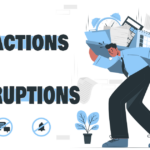As a small business owner, you may be wondering why having a sales process is important and how it can benefit your company. A sales process is a step-by-step approach to selling your products or services, and it can help you close deals more efficiently and effectively. In this detailed article, we will be diving into the crucial topic of developing a sales process and provide you with practical tips and strategies for creating a sales process that works for your small business.
Understanding the different stages of the sales process
As a small business owner, having a clear and defined sales process is essential for closing deals and growing your revenue. In this article, we will break down the different stages of the sales process and provide you with practical tips and strategies for successfully navigating each stage.
Prospecting
The first stage of the sales process is prospecting, which is the process of identifying and qualifying potential customers. This stage is crucial because it sets the foundation for the rest of the sales process. To successfully prospect, you need to be able to identify the characteristics of your ideal customer and then find ways to reach them. This can be done through a variety of methods, such as networking, attending industry events, or using social media.
For example, If you’re a small business that sells software products, you can use LinkedIn to find potential customers by searching for companies in your target industry that have a high number of employees. Once you’ve identified these companies, you can reach out to them and start a conversation about how your software can help them.
Initial Contact
The next stage of the sales process is the initial contact. This is where you make the first point of contact with a potential customer. The goal of this stage is to build a relationship with the customer and to understand their needs and pain points. This can be done through a phone call, an email, or a face-to-face meeting.
For example, If you’re a small business that sells graphic design services, you can reach out to potential customers by email and introduce yourself and your services. In this email, you can also ask a few questions to learn more about their business and any current design projects they may be working on.
Qualification
The third stage of the sales process is qualification. During this stage, you determine if the potential customer is a good fit for your product or service. This is done by asking questions and gathering information about their needs and budget. If the customer is a good fit, you can move on to the next stage of the sales process. If not, it’s best to move on to another potential customer.
For example, If you’re a small business that sells SEO services, you can ask potential customers about their current website traffic, search engine rankings, and any specific keywords they would like to target. Based on their answers, you can determine if your services would be a good fit for their business.
Presentation
The fourth stage of the sales process is the presentation. During this stage, you present your product or service to the potential customer and show them how it can solve their problem. This can be done through a face-to-face meeting, a webinar, or a demonstration. The goal of this stage is to build trust and credibility with the customer and to show them that your product or service is the best solution for their needs.
For example, If you’re a small business that sells consulting services, you can schedule a face-to-face meeting with a potential customer and present a customized proposal that addresses their specific needs and challenges. During the meeting, you can also answer any questions they may have and provide examples of how you’ve helped similar businesses in the past.
Handling objections
The fifth stage of the sales process is handling objections. During this stage, the potential customer may raise concerns or objections about your product or service. It’s important to be prepared for these objections and to have a plan for addressing them. The goal of this stage is to overcome the objections and to move the customer closer to making a purchase.
For example, If you’re a small business that sells fitness equipment, a potential customer may raise anobjection about the cost of the equipment. To overcome this objection, you can provide information on financing options or a payment plan, or highlight the long-term benefits and cost savings of the equipment compared to a gym membership. You can also offer a money-back guarantee or a free trial period to help alleviate any concerns they may have.
Closing the sale
The final stage of the sales process is closing the sale. This is where you ask for the customer’s business and finalize the deal. The key to successfully closing a sale is to be confident and assertive, while also being respectful of the customer’s decision.
For example, If you’re a small business that sells coaching services, you can ask the potential customer if they’re ready to move forward with your services and set up a start date for the coaching program. You can also provide a clear call-to-action such as “let’s schedule our first session” or “let’s get started today” to encourage them to make a decision.
In conclusion, understanding the different stages of the sales process is crucial for small business owners. By following these stages and implementing effective strategies, you can increase your chances of closing deals and growing your revenue. Remember to be prepared, confident, and respectful throughout the process, and don’t be afraid to ask for the sale.
Identifying and qualifying leads
One of the most important steps in developing a sales process for your small business is identifying and qualifying leads. This is the process of identifying potential customers who are most likely to purchase your products or services, and then determining if they are a good fit for your business. By effectively identifying and qualifying leads, you can increase your chances of closing deals and growing your revenue.
Identifying leads
The first step in identifying and qualifying leads is to identify potential customers. This can be done through a variety of methods, such as networking, attending industry events, or using social media. The key is to identify the characteristics of your ideal customer, and then find ways to reach them.
For example, if you’re a small business that sells eco-friendly products, you can use social media to identify potential customers by searching for individuals who have an interest in environmental issues, and post content that relates to this interest.
Qualifying leads
The next step is to qualify the leads you’ve identified. This is done by gathering information about their needs and budget, and determining if they are a good fit for your product or service. You can do this by asking questions such as “What is your budget for this project?” or “What are your specific needs or pain points?”
For example, If you’re a small business that sells web development services, you can ask potential customers questions about their current website and their goals for a new website. Based on their answers, you can determine if your services would be a good fit for their business.
Lead Scoring
Lead scoring is a method of assigning numerical values to leads based on their behavior and information. This can be used as a way to qualify leads by determining how likely they are to become customers. For example, a lead who has filled out a contact form or requested a demo would be scored higher than a lead who has only visited your website.
For example, a small business that sells marketing services can use lead scoring to identify leads who have shown a high level of engagement with the company’s content and have demonstrated a strong interest in the services offered.
Using the CRM
Using a CRM (customer relationship management) system can help you effectively identify and qualify leads by keeping track of all of the interactions you’ve had with a potential customer. You can use this information to determine the status of a lead and to create targeted campaigns.
For example, If you’re a small business that sells software products, you can use a CRM to track the interactions you’ve had with a lead, such as how many times they’ve visited your website, which pages they’ve viewed, and what products they’ve shown interest in. This information can help you determine the best time to reach out to that lead and what messaging will be most effective.
In conclusion, identifying and qualifying leads is a critical step in developing a sales process for your small business. By effectively identifying and qualifying leads, you can increase your chances of closing deals and growing your revenue. Remember to use a variety of methods to identify potential customers, ask the right questions to qualify leads, and use tools such as lead scoring and CRM to effectively track and manage your leads.
Building and maintaining relationships with prospects
One of the most important aspects of the sales process is building and maintaining relationships with prospects. This is the process of creating and nurturing a connection with potential customers in order to increase the likelihood of closing a sale. By effectively building and maintaining relationships with prospects, you can establish trust and credibility, and ultimately increase your chances of growing your revenue.
Creating a connection
The first step in building relationships with prospects is to create a connection with them. This can be done through various methods such as networking, attending industry events, or using social media. The key is to find common ground and establish a sense of trust and credibility with the prospect.
For example, If you’re a small business that sells web design services, you can create a connection with a prospect by sharing industry-related articles and insights on social media, which shows that you are knowledgeable and passionate about the field and can help the prospect with their needs.
Communicating effectively
Effective communication is key in building and maintaining relationships with prospects. This means being responsive to their needs and questions, providing valuable information, and being transparent about your products or services.
For example, If you’re a small business that sells marketing services, you can communicate effectively with a prospect by providing a detailed proposal outlining the services you offer and how they will benefit their business. Additionally, you can schedule regular check-ins to ensure that the prospect is satisfied with the services and address any concerns they may have.
Providing value
Another important aspect of building and maintaining relationships with prospects is providing value. This means going above and beyond to help the prospect, even if it does not result in an immediate sale.
For example, If you’re a small business that sells coaching services, you can provide value to a prospect by offering a free consultation or a sample session. This not only shows that you are knowledgeable and passionate about your field but also that you are willing to invest time and resources in helping the prospect, even if it does not result in a sale.
Personalizing the relationship
Personalizing the relationship with the prospect is an effective way to build trust and credibility. This means taking the time to understand their unique needs and tailoring your approach accordingly.
For example, If you’re a small business that sells accounting services, you can personalize the relationship with a prospect by understanding their unique needs and providing customized solutions. This not only shows that you are invested in their success but also that you are willing to go the extra mile to help them.
Using technology
Technology can play an important role in building and maintaining relationships with prospects. For example, using a CRM (customer relationship management) system can help you track interactions and tailor your approach accordingly. Email marketing, personalised video and chatbot can also help you to maintain a personalised and effective communication with your prospects.
In conclusion, building and maintaining relationships with prospects is a key step in the sales process. By effectively creating a connection, communicating effectively, providing value, personalizing the relationship, and using technology, you can establish trust and credibility, and ultimately increase your chances of closing a sale. Remember, the goal is not just to make a sale, but to create a long-term relationship with your prospect.
Creating and delivering value-based sales presentations
A crucial step in the sales process is creating and delivering value-based sales presentations. This is the process of presenting your products or services in a way that highlights their value and shows how they can solve the customer’s problems. By effectively creating and delivering value-based sales presentations, you can increase your chances of closing a sale and growing your revenue.
Creating a value-based presentation
The first step in creating a value-based sales presentation is to understand the customer’s needs and pain points. This means researching the customer’s industry, business, and specific needs, and then tailoring your presentation to address those needs.
For example, if you’re a small business that sells marketing services, you can create a value-based presentation by researching the customer’s industry and specific goals, and then creating a customized proposal that highlights how your services can help them achieve those goals.
Emphasizing the benefits
A key aspect of a value-based sales presentation is emphasizing the benefits of your products or services. This means highlighting how they can solve the customer’s problems and improve their business.
For example, If you’re a small business that sells web development services, you can emphasize the benefits of your services by highlighting how a new website can increase traffic, improve search engine rankings, and ultimately generate more revenue for the customer’s business.
Using storytelling
Using storytelling is a powerful way to create a value-based sales presentation. This means using real-life examples and case studies to demonstrate how your products or services have helped other businesses.
For example, if you’re a small business that sells coaching services, you can use storytelling by sharing case studies of other businesses you’ve helped and the specific results they’ve achieved, such as an increase in productivity or a decrease in employee turnover.
Using visual aids
Visual aids such as images, infographics and videos can help to make your sales presentation more engaging and effective. They can help to clarify complex information and make it easier for the customer to understand the value of your products or services.
For example, if you’re a small business that sells software products, you can use visual aids such as screenshots and videos to demonstrate how your software works and how it can improve the customer’s business.
Delivering the presentation
Once you have created your value-based sales presentation, it’s important to deliver it in a way that is engaging and effective. This means being confident, enthusiastic, and adapting your approach to the customer’s needs and preferences.
For example, if you’re a small business that sells graphic design services, you can deliver the presentation by showing examples of your work, highlighting your process and explaining the benefits of your services.
In conclusion, creating and delivering value-based sales presentations is a key step in the sales process. By effectively understanding the customer’s needs and pain points, emphasizing the benefits of your products or services, using storytelling, visual aids and delivering the presentation with confidence and enthusiasm, you can increase your chances of closing a sale and growing your revenue. Remember to tailor your approach to the customer’s needs and preferences and to be prepared to address any objections they may have.
Handling objections and closing deals
Handling objections and closing deals are essential steps in the sales process for small businesses. Objections are concerns or questions raised by the prospect that must be addressed in order to move forward with the sale. By effectively handling objections and closing deals, small business owners can increase their chances of closing a sale and growing their revenue.
Handling objections
The first step in handling objections is to be prepared. This means anticipating common objections and having a plan for addressing them. It’s also important to listen actively and understand the prospect’s concerns.
For example, if you’re a small business that sells eco-friendly products, a common objection may be that your products are more expensive than traditional products. To handle this objection, you can provide information on the long-term savings and benefits of using eco-friendly products, such as lower energy costs and reduced environmental impact.
Addressing concerns
Another important step in handling objections is addressing concerns. This means providing additional information or clarification to help the prospect understand the value of your products or services.
For example, if you’re a small business that sells web development services, a concern may be that your services are too expensive. To address this concern, you can provide a detailed breakdown of the costs and explain how your services can help the prospect’s business generate more revenue in the long run.
Providing solutions
Providing solutions is an effective way to handle objections. This means finding ways to address the prospect’s concerns and showing them how your products or services can solve their problems.
For example, if you’re a small business that sells marketing services, a concern may be that the prospect doesn’t have the budget for your services. To provide a solution, you can offer a payment plan or financing options to make the services more accessible.
Closing the deal
Once you’ve successfully handled the objections, the next step is closing the deal. This is where you ask for the customer’s business and finalize the sale. The key to successfully closing a deal is to be confident and assertive, while also being respectful of the customer’s decision.
For example, If you’re a small business that sells coaching services, you can ask the potential customer if they’re ready to move forward with your services and set up a start date for the coaching program. You can also provide a clear call-to-action such as “let’s schedule our first session” or “let’s get started today” to encourage them to make a decision.
In conclusion, handling objections and closing deals are essential steps in the sales process for small businesses. By being prepared, actively listening, addressing concerns, providing solutions, and closing the deal with confidence, small business owners can increase their chances of closing a sale and growing their revenue. Remember to always be respectful of the customer’s decision and to not push too hard for a sale.
Negotiating and finalizing agreements
Negotiating and finalizing agreements are the final steps in the sales process for small businesses. It is the process of reaching a mutually beneficial agreement on the terms and conditions of the sale. By effectively negotiating and finalizing agreements, small business owners can increase their chances of closing a sale and growing their revenue.
Preparing for negotiations
The first step in negotiating and finalizing agreements is preparing for the negotiations. This means researching the customer’s needs and interests, as well as understanding the terms and conditions that are important to your business. It is also important to have a clear understanding of your bottom line and what you are willing to accept in the agreement.
For example, if you’re a small business that sells marketing services, you can prepare for negotiations by researching the customer’s specific marketing needs and understanding the terms and conditions that are important to your business, such as payment terms and scope of work.
Negotiating terms
The next step is negotiating the terms and conditions of the agreement. This means discussing and compromising on the various aspects of the sale, such as price, delivery schedule, and payment terms. It is important to be open to compromise and to be able to justify your positions.
For example, if you’re a small business that sells software products, you can negotiate the terms of the agreement by discussing the pricing options, implementation schedule, and support options.
Finalizing the agreement
Once the terms of the agreement have been negotiated, the next step is finalizing the agreement. This means documenting the terms of the agreement in a formal contract or agreement. It is important to ensure that the agreement is clear and legally binding.
For example, if you’re a small business that sells consulting services, you can finalize the agreement by creating a detailed contract outlining the scope of work, payment terms, and any other important details of the agreement.
In conclusion, negotiating and finalizing agreements are key steps in the sales process for small businesses. By preparing for negotiations, effectively negotiating terms, and finalizing the agreement in a clear and legally binding way, small business owners can increase their chances of closing a sale and growing their revenue. Remember to be open to compromise and to always have a clear understanding of your bottom line.
Managing and tracking customer interactions and communication
Managing and tracking customer interactions and communication is a crucial step in the sales process for small businesses. It involves keeping track of all interactions and communication with customers and using that information to improve the sales process and customer relationships. By effectively managing and tracking customer interactions and communication, small business owners can increase their chances of closing a sale and growing their revenue.
Using a CRM (customer relationship management) system
One of the most effective ways to manage and track customer interactions and communication is by using a CRM (customer relationship management) system. A CRM system allows you to store and organize all of the information you have on a customer, such as contact information, previous interactions, and communication history. This information can then be used to create targeted campaigns and improve the overall sales process.
For example, if you’re a small business that sells web development services, you can use a CRM system to track the interactions you’ve had with a lead, such as how many times they’ve visited your website, which pages they’ve viewed, and what products they’ve shown interest in. This information can help you determine the best time to reach out to that lead and what messaging will be most effective.
Tracking communication
Tracking communication is another important aspect of managing and tracking customer interactions. This means keeping a record of all the emails, phone calls, and meetings you have with a customer. This information can be used to determine the best method of communication and to ensure that all customer interactions are handled in a timely and professional manner.
For example, if you’re a small business that sells coaching services, you can track communication by using a shared calendar to schedule meetings and calls, and keeping a record of all the emails exchanged with the customer.
Personalizing communication
Personalizing communication is an effective way to improve customer relationships and sales. This means tailoring your communication to the customer’s needs and preferences. For example, if a customer prefers email communication, you should make sure to primarily communicate with them via email and avoid calling them frequently.
For example, if you’re a small business that sells graphic design services, you can personalize communication by understanding the customer’s communication preferences and tailoring your approach accordingly. If the customer prefers phone calls, you can schedule regular check-ins to discuss the project progress and address any concerns they may have.
Following up with customers
Following up with customers is an important aspect of managing and tracking customer interactions. This means regularly checking in with customers to ensure that they are satisfied with your products or services and to address any concerns they may have.
For example, if you’re a small business that sells accounting services, you can follow up with customers by scheduling regular check-ins to review their financial statements, and address any concerns or questions they may have.
In conclusion, managing and tracking customer interactions and communication is a key step in the sales process for small businesses. By using a CRM system, tracking communication, personalizing communication, and following up with customers, small business owners can increase their chances of closing a sale and growing their revenue. Remember to always keep track of customer interactions and communication, and to use that information to improve your sales process and customer relationships.
Utilizing sales forecasting and forecasting tools
Sales forecasting and forecasting tools are essential for small businesses to predict future sales and plan accordingly. It helps businesses to identify trends and patterns in their sales data, which can be used to make better decisions and improve the sales process. By effectively utilizing sales forecasting and forecasting tools, small business owners can increase their chances of closing a sale and growing their revenue.
Creating a sales forecast
The first step in utilizing sales forecasting is to create a sales forecast. This means predicting future sales based on historical data and any external factors that may affect sales. A sales forecast can be created using various methods, such as trend analysis, regression analysis, and time series analysis.
For example, if you’re a small business that sells marketing services, you can create a sales forecast by analyzing historical data on the number of clients and revenue generated over the last few years. You can then use this information to predict future sales and plan accordingly.
Using forecasting tools
Forecasting tools are software programs that help businesses to analyze their sales data and create forecasts. These tools can be used to analyze various aspects of sales data, such as customer behavior, product performance, and market trends.
For example, if you’re a small business that sells graphic design services, you can use forecasting tools to analyze customer data, such as demographics and purchase history, to create a forecast of future sales and customer behavior.
Implementing the forecast
Once you have created a sales forecast, the next step is to implement it. This means using the forecast to make decisions and take action to improve the sales process. For example, if the forecast predicts a decrease in sales, you may need to implement strategies to increase sales, such as offering promotions, expanding your target market, or improving your products or services.
For example, if you’re a small business that sells coaching services, you can use your sales forecast to plan for the upcoming months, such as how many new clients you need to acquire, how many sessions you need to schedule and how much revenue you need to generate. Based on this, you can create a plan of action to achieve your forecasted numbers.
Monitoring and adjusting the forecast
It is important to monitor and adjust the forecast as needed. This means regularly reviewing the forecast and comparing it to actual sales data. If there are any discrepancies, you should analyze the reasons for the differences and make adjustments to the forecast as needed.
For example, if you’re a small business that sells software products, you can monitor and adjust the forecast by comparing the forecasted sales numbers with the actual sales numbers on a monthly or quarterly basis. If there is a significant difference, you can analyze the reasons for the difference and make adjustments to the forecast accordingly.
In conclusion, utilizing sales forecasting and forecasting tools is a key step in the sales process for small businesses. By creating a sales forecast, using forecasting tools, implementing the forecast, and monitoring and adjusting the forecast as needed, small business owners can increase their chances of closing a sale and growing their revenue. Remember to always keep track of your sales data and to use that information to make better decisions and improve the sales process.
Understanding the role of sales data and analytics
Sales data and analytics play a crucial role in the sales process for small businesses. They help businesses to understand their sales performance, identify trends, and make data-driven decisions. By effectively understanding the role of sales data and analytics, small business owners can increase their chances of closing a sale and growing their revenue.
Collecting and analyzing sales data
The first step in understanding the role of sales data and analytics is to collect and analyze sales data. This means gathering information on various aspects of sales, such as customer behavior, product performance, and market trends. Once the data is collected, it can be analyzed to identify patterns and trends, which can be used to make better decisions and improve the sales process.
For example, if you’re a small business that sells marketing services, you can collect and analyze sales data on the number of clients, revenue generated, and the effectiveness of different marketing campaigns. This information can be used to identify which marketing strategies are working and which ones need to be improved.
Using analytics tools
Analytics tools are software programs that help businesses to analyze their sales data and identify trends and patterns. These tools can be used to analyze various aspects of sales data, such as customer behavior, product performance, and market trends.
For example, if you’re a small business that sells web development services, you can use analytics tools to analyze website traffic, bounce rate, and conversion rate, and identify patterns and trends in customer behavior. This information can be used to make data-driven decisions on how to improve the website’s user experience and conversion rate.
Implementing data-driven decisions
Once the sales data is collected and analyzed, the next step is to use the insights to make data-driven decisions. This means using the insights from the data to make decisions that will improve the sales process and customer relationships. It also means taking actions based on the insights.
For example, if you’re a small business that sells coaching services, you can use data from customer surveys to identify areas where the coaching services can be improved. Based on the insights, you can make changes to the coaching program and create a plan of action to improve customer satisfaction.
Monitoring and adjusting the data
It is important to monitor and adjust the data as needed. This means regularly reviewing the data and comparing it to actual sales performance. If there are any discrepancies, you should analyze the reasons for the differences and make adjustments to the data as needed.
For example, if you’re a small business that sells software products, you can monitor and adjust the data by comparing the forecasted sales numbers with the actual sales numbers on a monthly or quarterly basis. If there is a significant difference, you can analyze the reasons for the difference and make adjustments to the forecast accordingly.
In conclusion, understanding the role of sales data and analytics is a key step in the sales process for small businesses. By collecting and analyzing sales data, using analytics tools, implementing data-driven decisions, and monitoring and adjusting the data as needed, small business owners can increase their chances of closing a sale and growing their revenue. Remember to always keep track of your sales data and to use that information to make better decisions and improve the sales process.
Creating and implementing a sales strategy
Creating and implementing a sales strategy is essential for small businesses to achieve their sales goals and grow their revenue. A sales strategy outlines the steps and actions a business will take to acquire new customers, retain existing customers, and increase sales. By effectively creating and implementing a sales strategy, small business owners can increase their chances of closing a sale and growing their revenue.
Defining sales goals
The first step in creating a sales strategy is to define the sales goals. This means setting clear and measurable targets for sales, such as the number of new customers, revenue, and profit. These goals should align with the overall business objectives and should be realistic and achievable.
For example, if you’re a small business that sells marketing services, you can define sales goals by setting targets for the number of new clients, revenue, and profit. These goals should align with the overall business objectives, such as increasing brand awareness and expanding the target market.
Creating a sales plan
The next step is to create a sales plan. This means outlining the steps and actions that will be taken to achieve the sales goals. The sales plan should include details on the target market, sales channels, and the tactics and strategies that will be used to acquire new customers and retain existing customers.
For example, if you’re a small business that sells web development services, you can create a sales plan by outlining the target market, sales channels, and the tactics and strategies that will be used to acquire new customers, such as attending networking events, cold-calling, and creating a referral program.
Implementing the sales plan
Once the sales plan is created, the next step is to implement it. This means putting the plan into action and taking the necessary steps to achieve the sales goals. This can include training sales staff, creating marketing materials, and setting up systems to track and manage sales.
For example, if you’re a small business that sells coaching services, you can implement the sales plan by training sales staff on how to effectively communicate the value of coaching and by creating marketing materials such as brochures and case studies.
Monitoring and adjusting the sales strategy
It is important to monitor and adjust the sales strategy as needed. This means regularly reviewing the sales results, comparing them to the sales goals, and analyzing any discrepancies. If there are any deviations from the plan, adjustments should be made to the strategy to get back on track.
For example, if you’re a small business that sells software products, you can monitor and adjust the sales strategy by comparing the forecasted sales numbers with the actual sales numbers on a monthly or quarterly basis. If there is a significant difference, you can analyze the reasons for the difference and make adjustments to the strategy accordingly.
In conclusion, creating and implementing a sales strategy is a key step in the sales process for small businesses. By defining sales goals, creating a sales plan, implementing the plan, and monitoring and adjusting the strategy as needed, small business owners can increase their chances of closing a sale and growing their revenue. Remember to always keep track of your sales performance and to use that information to make better decisions and improve the sales process. A well-crafted sales strategy can help small businesses to identify new opportunities and capitalize on them, to focus on the most profitable areas of their business, to track performance and measure progress and to stay competitive in the market. It is important to keep in mind that creating and implementing a sales strategy is a continuous process and it should be reviewed and updated regularly to adapt to the changing market conditions and to align with the business goals.
Building and managing a sales team
Building and managing a sales team is essential for small businesses to achieve their sales goals and grow their revenue. A strong sales team can help businesses to acquire new customers, retain existing customers, and increase sales. By effectively building and managing a sales team, small business owners can increase their chances of closing a sale and growing their revenue.
Hiring the right salespeople
The first step in building a sales team is to hire the right salespeople. This means selecting individuals who have the necessary skills, experience, and personality to be successful in the sales role. When hiring a salesperson, it’s important to look for qualities such as a positive attitude, strong communication skills, and a track record of success in sales.
For example, if you’re a small business that sells marketing services, you can hire salespeople who have experience in the marketing industry, strong communication skills, and a proven track record of closing deals.
Providing training and development
Providing training and development is an important aspect of building and managing a sales team. This means giving salespeople the tools, resources, and knowledge they need to be successful in their role. This can include training on the products or services, sales techniques, and customer service.
For example, if you’re a small business that sells web development services, you can provide training and development to your sales team by offering workshops on the latest web development trends, best practices for closing deals and on how to effectively communicate the value of your services.
Creating a sales culture
Creating a sales culture is another important aspect of building and managing a sales team. This means fostering an environment that promotes sales and encourages salespeople to be successful in their role. This can include setting clear sales goals, providing incentives for meeting those goals, and recognizing and rewarding salespeople for their achievements.
For example, if you’re a small business that sells coaching services, you can create a sales culture by setting clear sales goals, providing incentives for meeting those goals and recognizing and rewarding salespeople for their achievements. You can also create a culture of accountability by regularly tracking the sales performance of each team member.
Managing and leading the team
Managing and leading the sales team is an important aspect of building and managing a sales team. This means setting clear expectations, providing regular feedback and coaching, and holding salespeople accountable for their performance. It also means creating a positive and productive work environment, and leading by example.
For example, if you’re a small business that sells software products, you can manage and lead the sales team by setting clear expectations for performance, providing regular feedback and coaching, and holding team members accountable for their performance. You can also create a positive and productive work environment by encouraging open communication, fostering teamwork, and recognizing and rewarding top performers.
In conclusion, building and managing a sales team is a key step in the sales process for small businesses. By hiring the right salespeople, providing training and development, creating a sales culture, and managing and leading the team effectively, small business owners can increase their chances of closing a sale and growing their revenue. A well-built sales team can help a small business to achieve its sales goals, expand its customer base and increase its revenue. Remember to always keep track of the performance of your sales team and to use that information to make better decisions and improve the sales process.
Providing sales training and development
Providing sales training and development is essential for small businesses to achieve their sales goals and grow their revenue. It helps salespeople to acquire the skills, knowledge, and tools they need to be successful in their role. By effectively providing sales training and development, small business owners can increase their chances of closing a sale and growing their revenue.
Identifying training needs
The first step in providing sales training and development is to identify the training needs of the sales team. This means assessing the current skills and knowledge of the salespeople and identifying any areas that need improvement. This can include areas such as product knowledge, sales techniques, and customer service.
For example, if you’re a small business that sells marketing services, you can identify the training needs of the sales team by assessing their current knowledge of the different marketing services offered, and identifying any areas that need improvement.
Developing a training plan
The next step is to develop a training plan. This means outlining the steps and actions that will be taken to address the training needs identified. The training plan should include details on the training methods, materials, and resources that will be used.
For example, if you’re a small business that sells web development services, you can develop a training plan by outlining the different training methods, such as workshops and online resources, that will be used to improve the sales team’s knowledge of the latest web development trends and best practices for closing deals.
Implementing the training plan
Once the training plan is developed, the next step is to implement it. This means putting the plan into action and providing the training and development to the sales team. This can include conducting workshops, providing online resources, and offering one-on-one coaching.
For example, if you’re a small business that sells coaching services, you can implement the training plan by conducting workshops on how to effectively communicate the value of coaching, and by offering one-on-one coaching sessions to improve the sales team’s skills in identifying potential clients and closing deals.
Evaluating the training
It is important to evaluate the training to ensure that it is effective. This means measuring the results of the training and assessing the impact on the sales team’s performance. This can include conducting surveys, analyzing sales data, and tracking the progress of the sales team.
For example, if you’re a small business that sells software products, you can evaluate the training by conducting surveys to gather feedback from the sales team on the effectiveness of the training, analyzing sales data to track the progress of the sales team, and comparing the performance of the team before and after the training.
In conclusion, providing sales training and development is a key step in the sales process for small businesses. By identifying training needs, developing a training plan, implementing the plan, and evaluating the training, small business owners can increase their chances of closing a sale and growing their revenue. A well-trained sales team can help a small business to achieve its sales goals, expand its customer base, and increase its revenue. Remember to always keep track of the training and development provided to your sales team and to use that information to make better decisions and improve the sales process.
Utilizing sales enablement tools
Utilizing sales enablement tools is essential for small businesses to achieve their sales goals and grow their revenue. Sales enablement tools are software programs that help sales teams to be more effective in their role by providing them with the information, resources, and tools they need to sell more effectively. By effectively utilizing sales enablement tools, small business owners can increase their chances of closing a sale and growing their revenue.
Identifying sales enablement needs
The first step in utilizing sales enablement tools is to identify the needs of the sales team. This means assessing the current sales process, identifying any areas that need improvement, and determining what information, resources, and tools are needed to improve the sales process.
For example, if you’re a small business that sells marketing services, you can identify sales enablement needs by assessing the current sales process and identifying areas that need improvement such as the ability to track leads and customer interactions, or the need for more detailed product information.
Selecting sales enablement tools
The next step is to select the sales enablement tools that will best address the identified needs. There are a wide range of sales enablement tools available, such as sales automation software, CRM systems, and marketing automation software. It is important to choose the tools that best fit the needs of the business and the sales team.
For example, if you’re a small business that sells web development services, you can select sales enablement tools such as a CRM system to track leads and customer interactions, or a marketing automation software to create and track marketing campaigns.
Implementing and training on the tools
Once the sales enablement tools are selected, the next step is to implement them. This means setting up the tools, configuring them to fit the needs of the business, and training the sales team on how to use them effectively.
For example, if you’re a small business that sells coaching services, you can implement sales enablement tools such as a CRM system to track leads and customer interactions and a marketing automation software to create and track marketing campaigns. You can also provide training to your sales team on how to effectively use these tools, such as how to input and track customer data, and how to use marketing automation features.
Monitoring and optimizing usage
It is important to monitor and optimize the usage of the sales enablement tools. This means regularly reviewing the usage, analyzing the data, and making adjustments as needed. This can include identifying any issues with the tools, making changes to the configuration, and providing additional training as needed.
For example, if you’re a small business that sells software products, you can monitor and optimize usage of the sales enablement tools by regularly reviewing the usage data, analyzing the performance of the tools and making adjustments as needed. If there are any issues with the tools, you can provide additional training and make changes to the configuration to improve performance.
In conclusion, utilizing sales enablement tools is a key step in the sales process for small businesses. By identifying sales enablement needs, selecting the appropriate tools, implementing and training on the tools, and monitoring and optimizing usage, small business owners can increase their chances of closing a sale and growing their revenue. A well-utilized sales enablement tools can help a small business to improve its sales process, increase its productivity and efficiency and ultimately increase its revenue. It’s important to keep in mind that the use of sales enablement tools should be a continuous process and should be reviewed and updated regularly to align with the business goals.
Staying up-to-date with industry trends and best practices
Staying up-to-date with industry trends and best practices is essential for small businesses to achieve their sales goals and grow their revenue. It is important for sales teams to be aware of the latest trends, technologies, and strategies in their industry in order to stay competitive and to continue to improve their sales process. By staying up-to-date with industry trends and best practices, small business owners can increase their chances of closing a sale and growing their revenue.
Identifying industry trends and best practices
The first step in staying up-to-date with industry trends and best practices is to identify them. This means keeping informed of the latest developments, technologies, and strategies in the industry. This can include attending industry conferences, reading industry publications, and networking with other professionals in the field.
For example, if you’re a small business that sells marketing services, you can identify industry trends and best practices by attending industry conferences such as the MarketingProfs B2B Forum, reading industry publications such as MarketingProfs and networking with other marketing professionals to learn about the latest trends and best practices in the field.
Implementing trends and best practices
The next step is to implement the identified trends and best practices. This means adapting the sales process and strategies to incorporate the latest developments and technologies in the industry. It is important to choose the trends and best practices that are most relevant to the business and that will have the most impact on the sales process.
For example, if you’re a small business that sells web development services, you can implement industry trends and best practices by incorporating the latest web development technologies, such as responsive design, into your sales process and by using data-driven strategies to increase conversion rates.
Measuring the impact
It is important to measure the impact of the implemented trends and best practices on the sales process. This means tracking the results, analyzing the data and making adjustments as needed. This can include identifying any issues with the implemented trends and best practices, making changes to the sales process and providing additional training as needed.
For example, if you’re a small business that sells software products, you can measure the impact of the implemented trends and best practices by tracking the results of the sales process, analyzing the data and comparing the performance of the team before and after the implementation.
In conclusion, staying up-to-date with industry trends and best practices is a key step in the sales process for small businesses. By identifying the trends and best practices, implementing them and measuring the impact, small business owners can increase their chances of closing a sale and growing their revenue. A well-informed sales team can help a small business to stay competitive, improve its sales process and increase its revenue. Remember to always keep track of industry trends and best practices and to use that information to make better decisions and improve the sales process.
Measuring and analyzing sales performance
Measuring and analyzing sales performance is essential for small businesses to achieve their sales goals and grow their revenue. It helps to identify areas for improvement and to track the progress of the sales team. By effectively measuring and analyzing sales performance, small business owners can increase their chances of closing a sale and growing their revenue.
Setting sales performance metrics
The first step in measuring and analyzing sales performance is to set sales performance metrics. These are the benchmarks that will be used to track the progress and performance of the sales team. These metrics can include things such as the number of sales, the value of sales, conversion rates, and customer retention rates.
For example, if you’re a small business that sells marketing services, you can set sales performance metrics such as the number of new clients acquired, the value of new contracts and the retention rate of existing clients.
Tracking and measuring sales performance
The next step is to track and measure sales performance. This means regularly collecting data on the sales performance metrics, analyzing the data, and comparing it to the benchmarks set. This can include tracking the number of sales, the value of sales, conversion rates, and customer retention rates.
For example, if you’re a small business that sells web development services, you can track and measure sales performance by regularly collecting data on the number of new clients acquired, the value of new contracts and the retention rate of existing clients.
Analyzing and interpreting sales performance data
Once the sales performance data has been collected, the next step is to analyze and interpret it. This means identifying trends, patterns, and areas for improvement. This can include identifying which products or services are selling well, which salespeople are performing best, and which strategies are most effective.
For example, if you’re a small business that sells coaching services, you can analyze and interpret sales performance data by identifying which coaching services are most popular among customers, which salespeople are most effective at closing deals, and which strategies are resulting in the highest retention rate of clients.
Taking action on sales performance data
The final step is to take action on the sales performance data. This means using the insights gained from the analysis to make changes and improvements to the sales process. This can include adjusting sales strategies, providing additional training to salespeople, and implementing new technologies or tools.
For example, if you’re a small business that sells software products, you can take action on sales performance data by adjusting sales strategies to focus on the products that are selling well, providing additional training to salespeople on how to effectively sell those products, and implementing new technologies or tools to improve the sales process.
In conclusion, measuring and analyzing sales performance is a key step in the sales process for small businesses. By setting sales performance metrics, tracking and measuring sales performance, analyzing and interpreting the data, and taking action on the insights gained, small business owners can increase their chances of closing a sale and growing their revenue. A well-managed sales process can help a small business to achieve its sales goals, expand its customer base, and increase its revenue. Remember to always keep track of the sales performance and to use that information to make better decisions and improve the sales process.
Continuously improving and refining the sales process
Continuously improving and refining the sales process is essential for small businesses to achieve their sales goals and grow their revenue. It is important for sales teams to constantly evaluate and improve their sales process in order to stay competitive and increase the chances of closing a sale. By continuously improving and refining the sales process, small business owners can increase their chances of growing their revenue.
Assessing the current sales process
The first step in improving and refining the sales process is to assess the current sales process. This means evaluating the current sales strategies, identifying any areas that need improvement and determining what changes need to be made.
For example, if you’re a small business that sells marketing services, you can assess the current sales process by evaluating the current sales strategies and identifying areas that need improvement such as the lead generation process and the conversion rate.
Implementing changes and improvements
The next step is to implement the changes and improvements identified in the assessment. This means making adjustments to the sales process, implementing new strategies and technologies, and providing additional training to the sales team.
For example, if you’re a small business that sells web development services, you can implement changes and improvements by adjusting the lead generation process, implementing data-driven strategies to increase conversion rates, and providing additional training to the sales team on how to effectively use the new technologies and strategies.
Measuring the impact of the changes
It is important to measure the impact of the changes and improvements made to the sales process. This means tracking the results, analyzing the data and comparing it to the previous sales performance. This can include identifying any issues with the changes, making additional adjustments as needed, and providing additional training as needed.
For example, if you’re a small business that sells software products, you can measure the impact of the changes and improvements made to the sales process by tracking the results of the sales process, analyzing the data and comparing the performance of the team before and after the implementation of the changes.
In conclusion, continuously improving and refining the sales process is a key step in the sales process for small businesses. By assessing the current sales process, implementing changes and improvements, and measuring the impact of those changes, small business owners can increase their chances of closing a sale and growing their revenue. A well-refined sales process can help a small business to stay competitive, improve its sales process and increase its revenue. Remember to always keep track of the sales process and to use that information to make better decisions and improve it.
